Affiliate links on Android Authority may earn us a commission. Learn more.
Samsung Galaxy Note 9 vs iPhone XS Max: Which is worth your $1,000?
Samsung and Apple are longtime rivals in the mobile industry. Every year it’s always exciting to see how their smartphones stack up against one another. The Galaxy Note 9 and iPhone XS Max are two of the biggest, most powerful, and most expensive mainstream smartphones we’ve ever seen.
Let’s find out which one is the better thousand-dollar smartphone in our full Samsung Galaxy Note 9 vs iPhone XS Max comparison.
Design
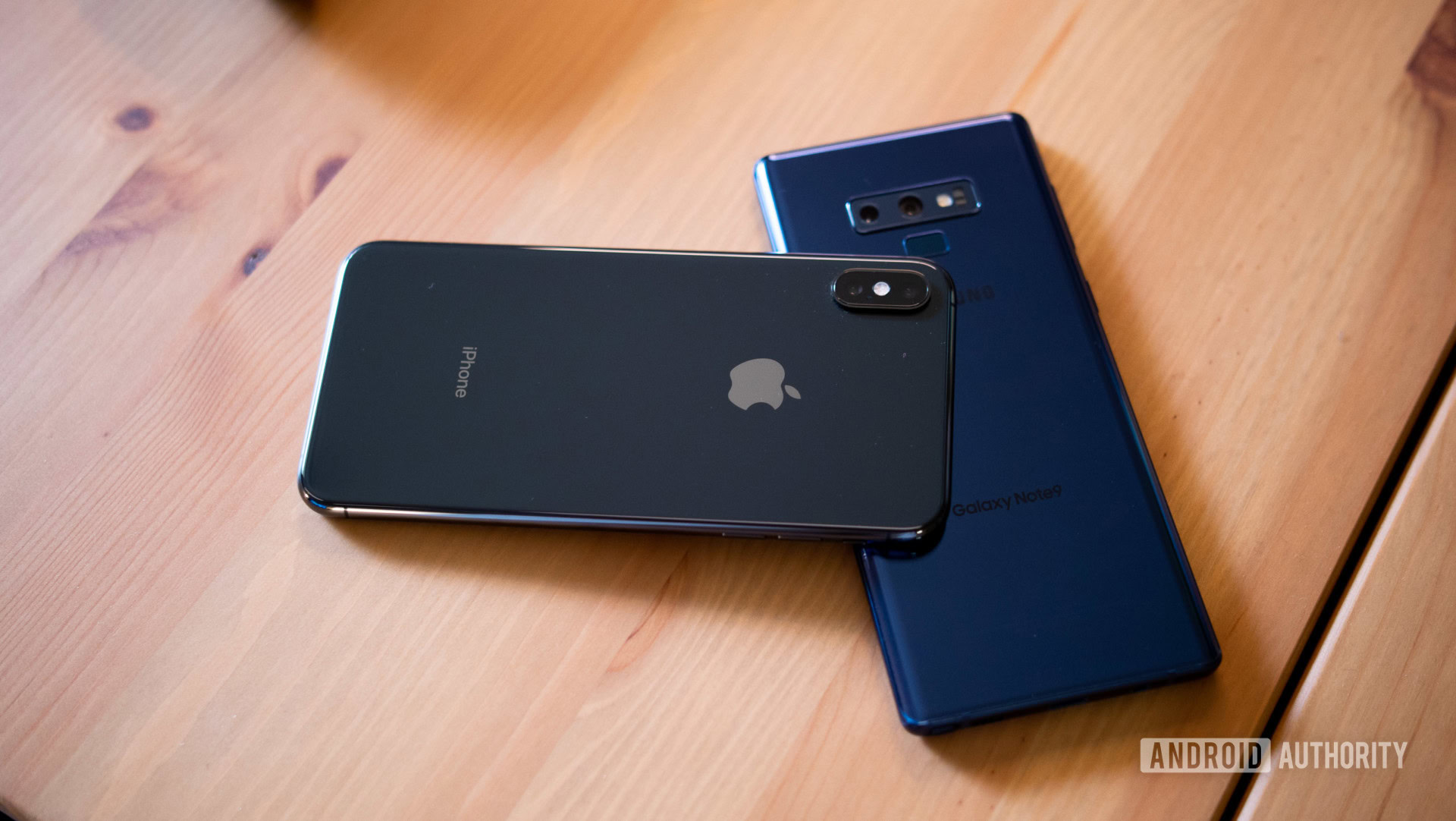
When it comes to design, Samsung and Apple are at the top of the class. The Note 9 and iPhone XS Max offer attractive designs with superb build quality. Both use a glass sandwich design held together by a metal frame, which is a fairly common design formula in today’s smartphone world. The metal used on the iPhone XS Max, however, is stainless steel whereas the Note 9 uses the more typical aluminum. Both feel equally as durable.
Don’t miss: Samsung Galaxy Note 9 review | Everything you need to know about the iPhone XS Max
Although the Note 9 and XS Max use similar materials, they feel very different. The Note 9 is more boxy and rectangular and features chamfered edges, making for a much more industrial look. The iPhone XS Max goes for a sleeker appearance with rounded corners and curved edges all around. Because of this, the iPhone XS Max feels more comfortable. The Note 9 is slightly bigger than the XS Max, but this difference is negligible — neither device is great for one-handed use.
Display
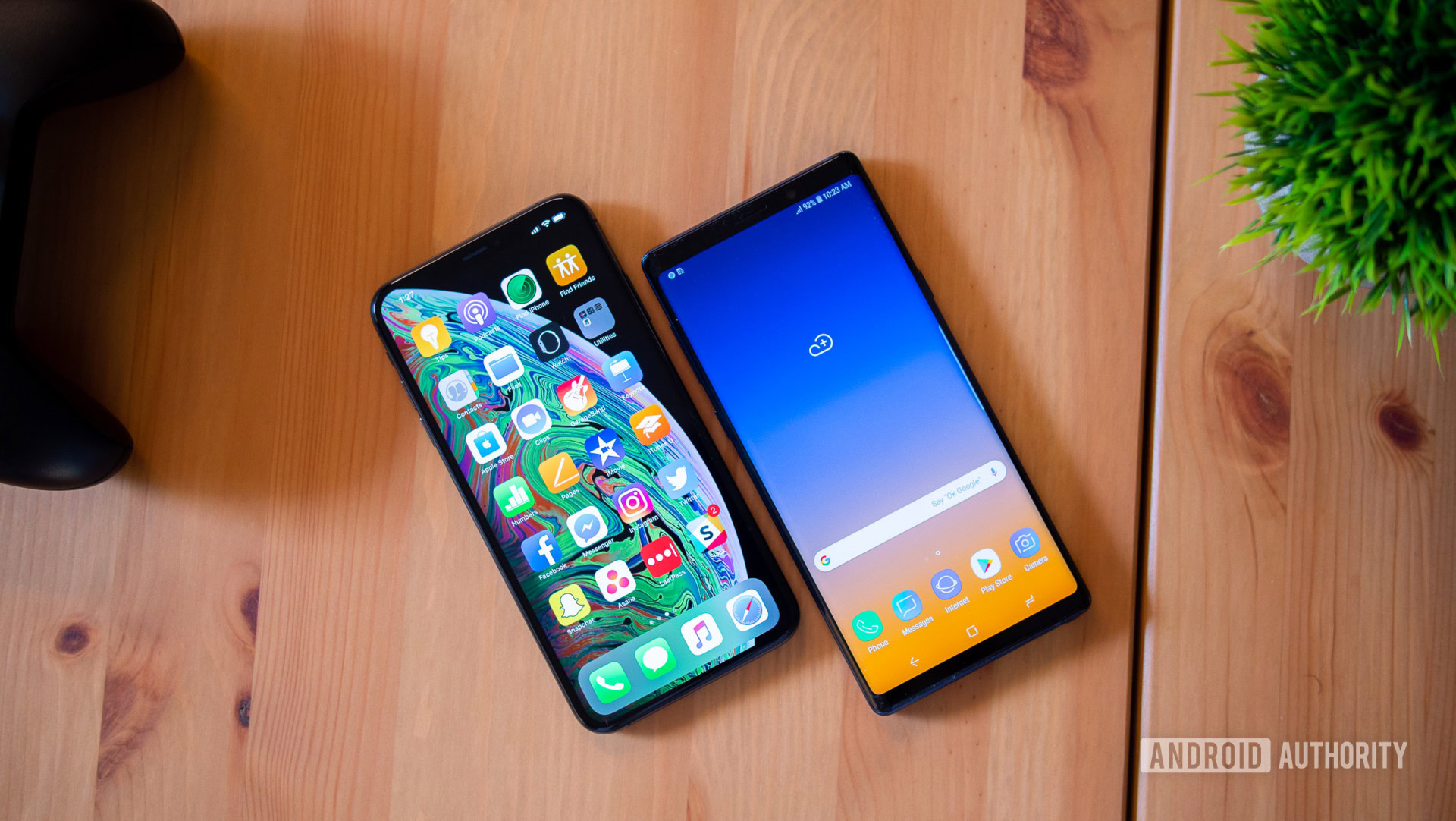
The Galaxy Note 9 and iPhone XS Max both offer big, bright, vibrant AMOLED displays. There’s no denying they’re two of the best smartphone displays on the market. They both have very thin bezels, giving you a nearly edge-to-edge experience. Samsung manages to do it without the use of a notch. I prefer the notch-free look of the Note 9’s display, but the notch on the XS Max isn’t as bothersome as you might think. If you’re an Apple enthusiast you’ve also more than likely adjusted to it by now.
The displays are fairly close in size. The Note 9 measures 6.4 inches, with the XS Max at 6.5 inches. The Note 9’s display does pack more resolution at 2,960 x 1,440 versus the odd 2,688 x 1,242 resolution of the iPhone, but they’re both so incredibly sharp it’s hard to spot any differences between the two.
Content such as mobile games, movies, and YouTube videos still look amazing but Apple is currently not taking full advantage of the XS Max’s display size.
The biggest problem I have with the large display on the XS Max is you don’t get to see more content like on the Note 9. Instead, you see the same amount of content as you would on the regular XS, just bigger. Mobile games, movies, and YouTube videos still look amazing, but Apple is currently not taking full advantage of the XS Max’s display size. It’d be great if I could see more of my Twitter feed or more of a web page at a single glance. You can change the size of the text but the difference in visible content is minimal and only works in apps that support it.
Performance

The Note 9 and iPhone XS Max are the best smartphones each respective company has to offer, which means they are no performance slouches. The Galaxy Note 9 features Qualcomm’s powerful Snapdragon 845 with 6 or 8 gigabytes of RAM depending on the storage configuration you choose. The iPhone XS Max features Apple’s proprietary A12 Bionic chipset, its most powerful chipset to date.
Although the Note 9 keeps up with the XS Max extremely well, Apple’s touch response is still second to none.
In daily use, both devices are extremely fast and fluid. They never showed any signs of slowing down regardless of what I threw at them. Launching applications, multitasking, browsing the web, and gaming are fantastic. Although the Note 9 keeps up with the XS Max extremely well, I have to admit Apple’s touch response is still second to none. Swiping, scrolling, tapping, and pinching to zoom feels much smoother and more instantaneous than any Android phone I’ve tried. This speaks volumes about how much of an advantage Apple has with the vertical integration of its hardware and software.
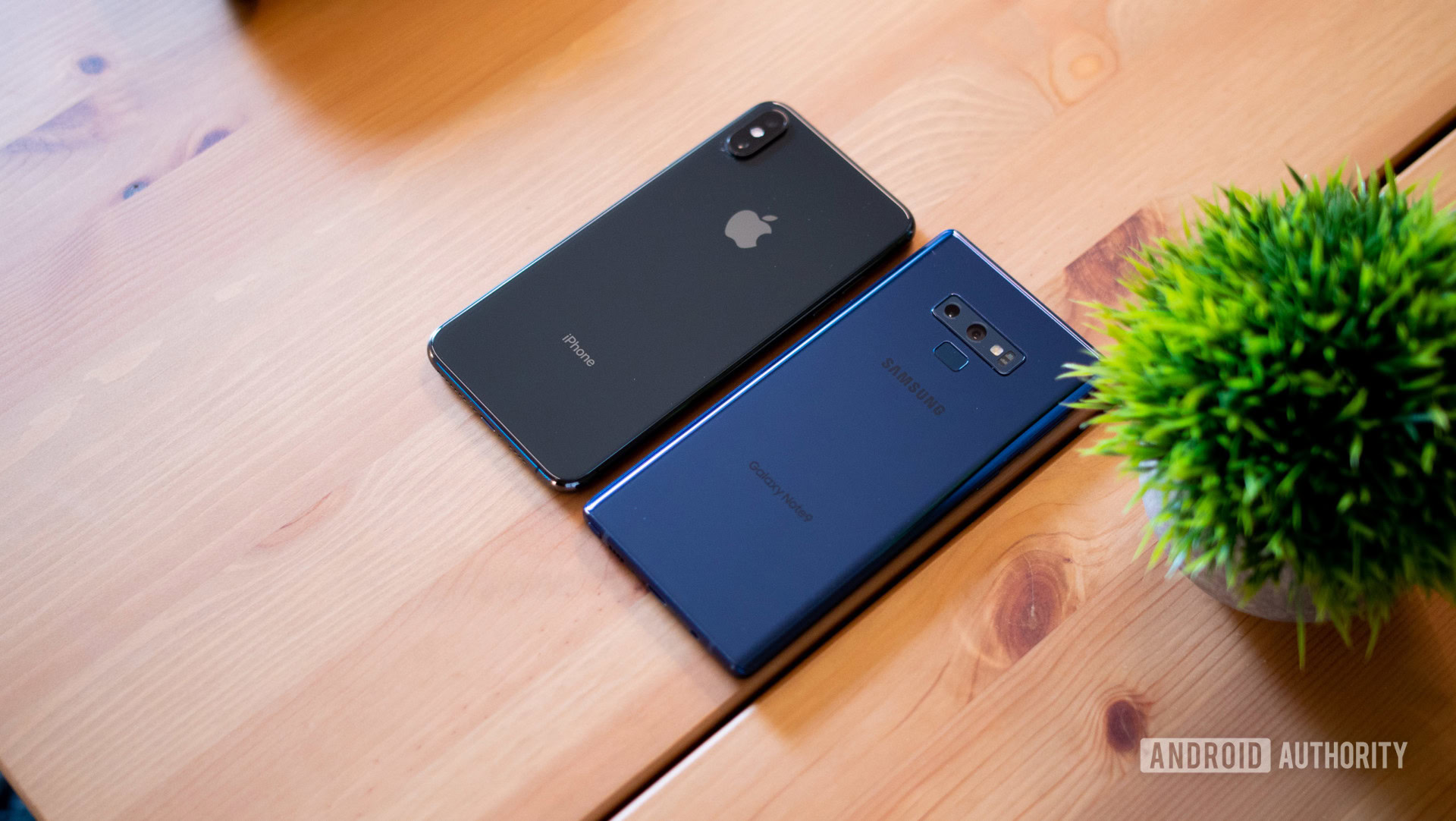
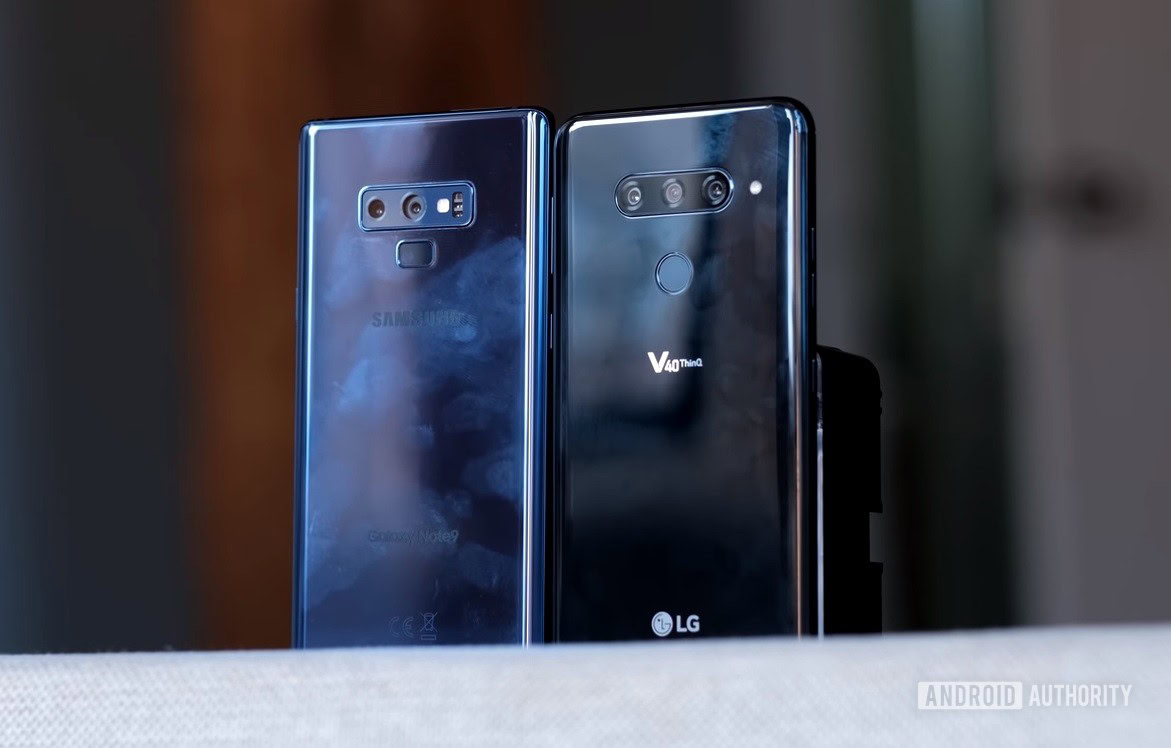
Battery life on the Note 9 and XS Max are very good. The 3,174mAh battery of the XS Max is significantly smaller than the 4,000mAh battery of the Note 9, but battery life can’t simply be measured by battery capacities.
Apple has never been known for huge batteries and that is still the case. In our initial review of the Note 9, we averaged six to seven hours screen-on time a day and that’s still true. Apple claims the iPhone XS Max lasts 90 minutes longer than last year’s iPhone X. While I can’t validate that claim the XS Max easily got me through a full day with around 20 percent left at the end of the day. On lighter days when I don’t watch as many YouTube videos or play games, I’d typically end with around 50 percent left. Both batteries perform very well and are not cause for any concern.
Hardware
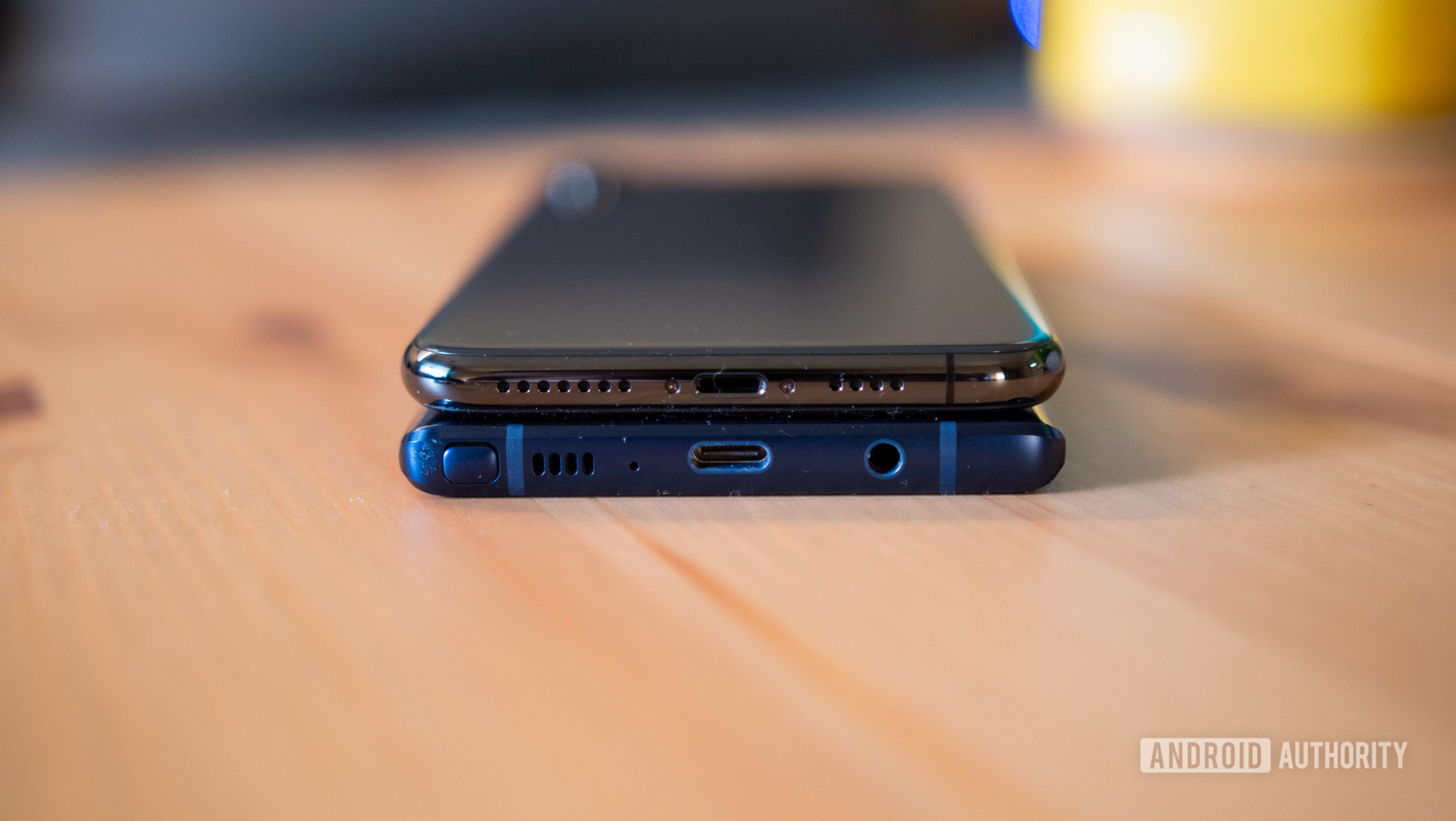
FaceID works great and is very reliable even in conditions where you don't have a ton of light.
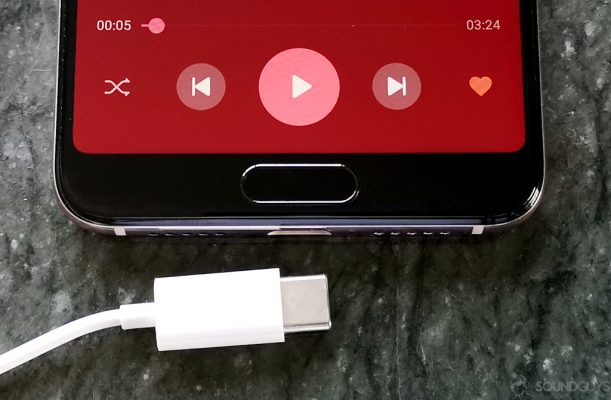
The Galaxy Note 9 and iPhone XS Max offer very similar hardware features, but some notable differences could be considered a make or break feature. The Note 9 and XS Max both have IP68 water resistance, dual speakers and wireless charging but the XS Max lacks a headphone jack, expandable storage, and a fingerprint sensor. The fingerprint sensor is a feature Apple removed to go all-in with FaceID as its preferred biometric security method.
FaceID works great and is very reliable even in conditions where you don’t have a ton of light. As long as you’re not in a pitch dark room, it will usually work. The downside to not having a fingerprint sensor is not being able to unlock your phone without picking it up or before it comes out of your pocket. If you want to unlock it while leaving it on a table or desk you’ll have to resort to entering in your passcode.
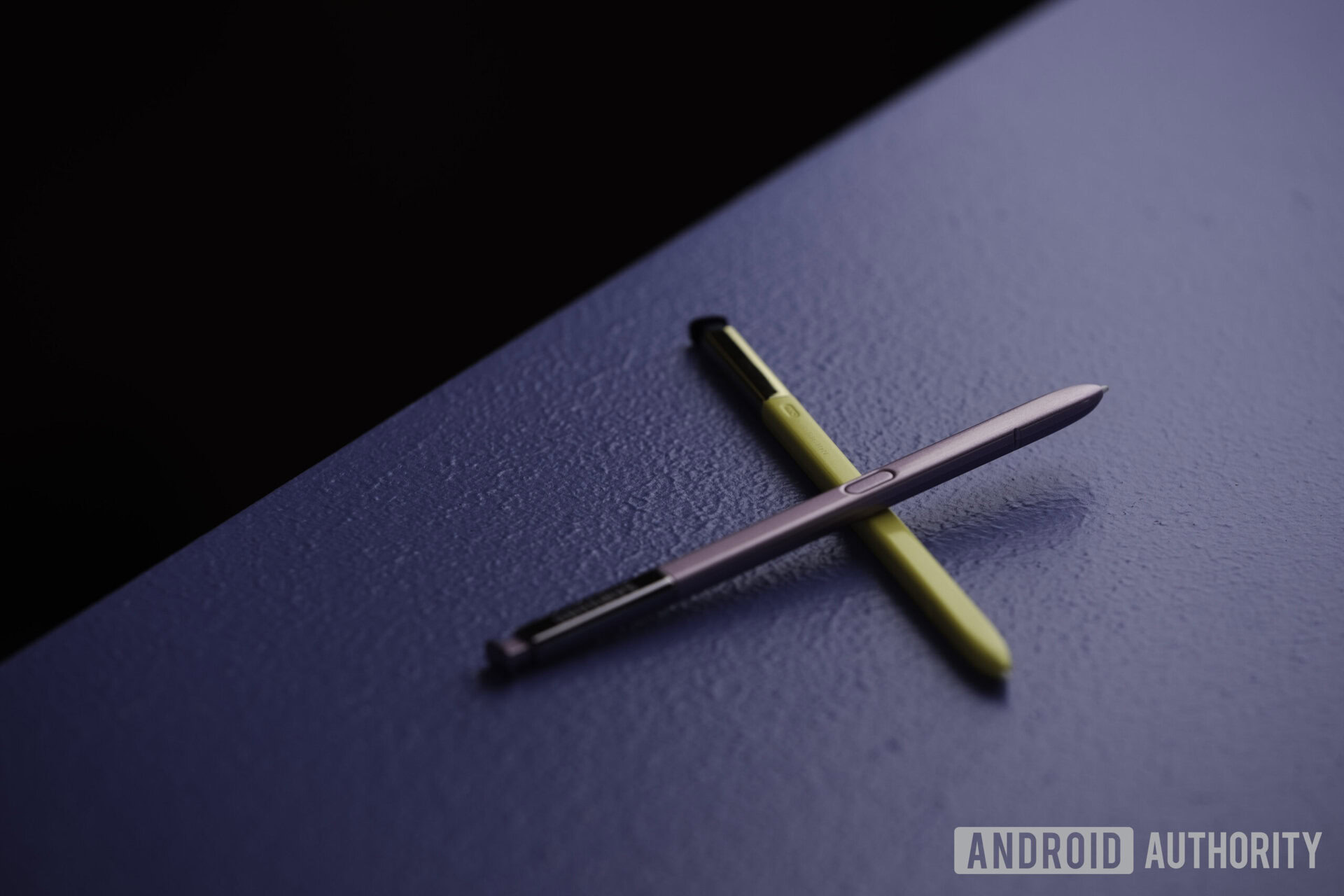
The Galaxy Note 9 has its own method of face unlock with Intelligent Scan which combines its iris scanning technology with face unlock. The feature works and is very secure, but it’s nowhere near as fast or reliable as FaceID.
The most significant piece of hardware differentiating the Note 9 from the XS Max is the S-Pen. This has been a signature feature of the Note line ever since the original Galaxy Note and it has only gotten better over time. I’ve never found the S-Pen particularly useful, but it’s a great tool for jotting down notes, drawing, and general productivity. This year Samsung added Bluetooth functionality to the pen, making it work as a magic wand of sorts for pausing and playing music or triggering the shutter button on the camera. Like the fingerprint scanner, the presence or absence of the S Pen will either be a huge deal for you or you won’t care at all, and if you’re all about the S Pen you’d never buy an iPhone anyway.
Camera
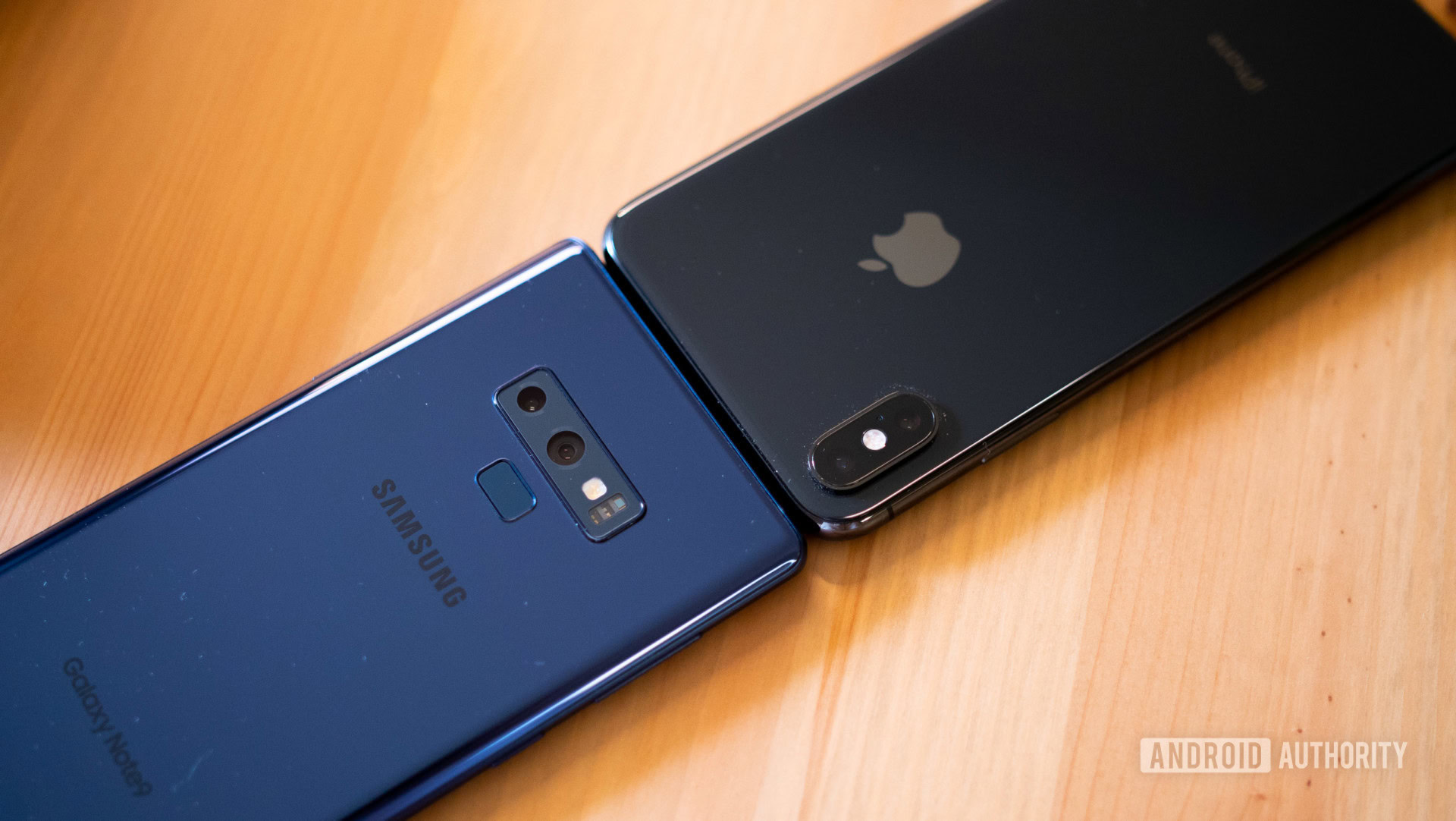
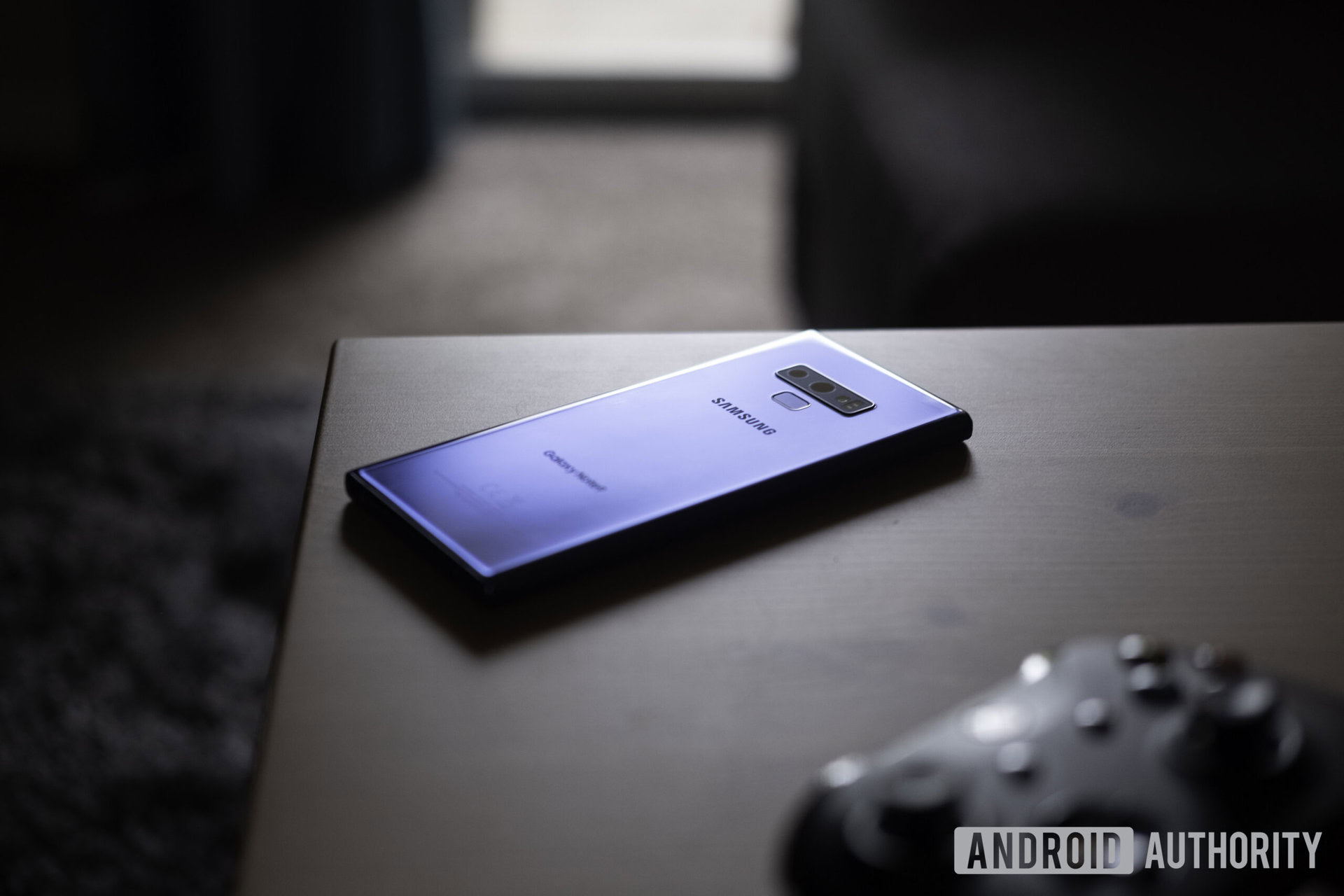
The Note 9 and iPhone XS Max both feature dual cameras on the rear with a secondary telephoto lens. The Note 9 has two 12MP sensors. The primary sensor has a mechanical aperture, allowing for switching between f/1.5 and f/2.4 to let in more light or create a shallower depth of field. The second sensor is fixed at f/2.4. Both lenses feature optical image stabilization, too.
The iPhone XS Max also comes with two 12MP cameras with f/1.8 aperture on the primary and f/2.4 on the secondary. Both lenses are also optically stabilized.
The telephoto lens on both smartphones allows for 2X optical zoom to get closer in on your subject without any loss of detail and the ability to take portrait mode photos. A new addition to the portrait mode on the iPhone this year is the ability to adjust the bokeh effect after the fact. This isn’t exactly a new feature for Android, but it’s a nice addition to the iPhone regardless.
The Note 9 tends to over-soften the details in faces and skin tones are washed out. The iPhone provides much more detail and better color accuracy with skin tones.
The Note 9 and iPhone XS Max take great portrait mode photos and usually do an excellent job of separating the subject from the background. Where the Note 9 falls short of the iPhone is when taking portraits of people. The Note 9 tends to over-soften the details in faces and skin tones are washed out. The iPhone provides much more detail and better color accuracy with skin tones.
The iPhone XS Max and Galaxy Note 9 can take incredible smartphone photos and if you were to only look at one or the other you wouldn’t have any complaints. Once you stack them side by side though it’s very easy to spot the differences. In almost every situation, the XS Max outperforms the Note 9. It’s not that the Note 9 takes bad photos, it’s just that the XS Max takes even better ones. In low light conditions, the images from the iPhone are much sharper with more natural colors and more detail in the highlights.
In the image pair below, the Note 9 oversaturates while the iPhone is more true to life. The Note handles the bright sign and light on the wall better than the iPhone, but the iPhone has far better detail on the building to the left. The Note 9 has a bit too much contrast but both images are pretty great.
The iPhone has better dynamic range overall, which is easily visible in high contrast situations such as a sunny day. You can see significantly more detail in the highlights and shadows. This most likely can be attributed to Apple’s Smart HDR, which stacks multiple photos together to achieve better shadow and highlight detail. The iPhone also does a much better job with color balance. The Note 9 tends to skew more towards a warmer image while the iPhone maintains a relatively neutral appearance.
Software
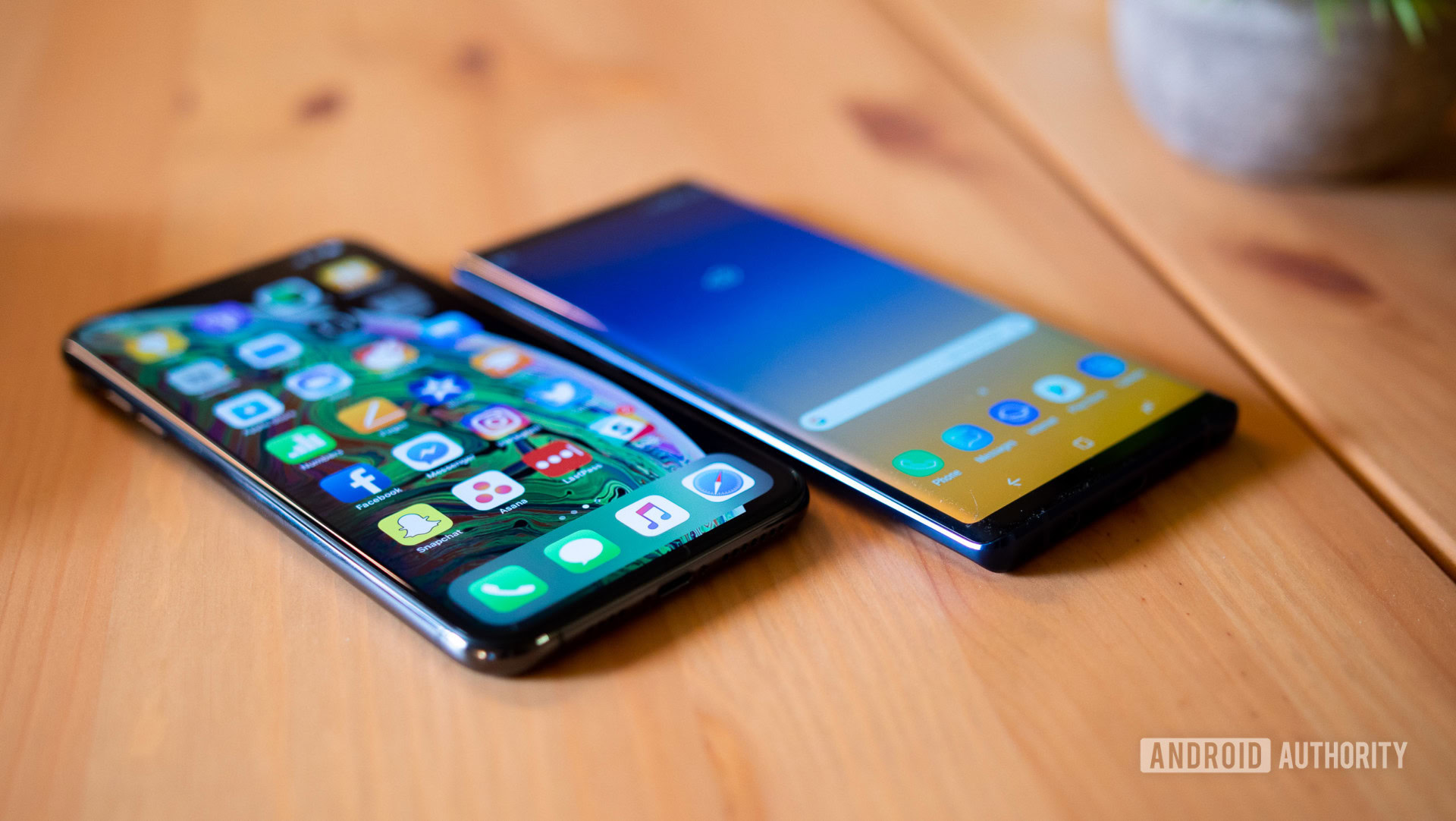
With the Note 9 running Android and the iPhone XS Max running iOS, the software experiences will obviously be very different. The Note 9 is currently on Android 8.1 Oreo with Samsung Experience 9.0. If you’ve used any recent Samsung phone within the last couple of years, this will feel very familiar. It’s somewhat colorful and changes a lot of the aesthetics of Android, but doesn’t interfere with its core functionality. Samsung’s Bixby was updated for the Note 9 to be smarter and more contextually aware. In our initial review, Bixby still didn’t work quite as well as Samsung advertised.
The release of the iPhone XS Max also means a new version of iOS — iOS 12. Aesthetically it looks almost identical to the past few software generations. Although it may not look very different on the outside there are several new improvements. In iOS 12, Apple put a big focus on performance, becoming faster at loading applications and opening the camera. Even the keyboard is quicker to appear on screen.
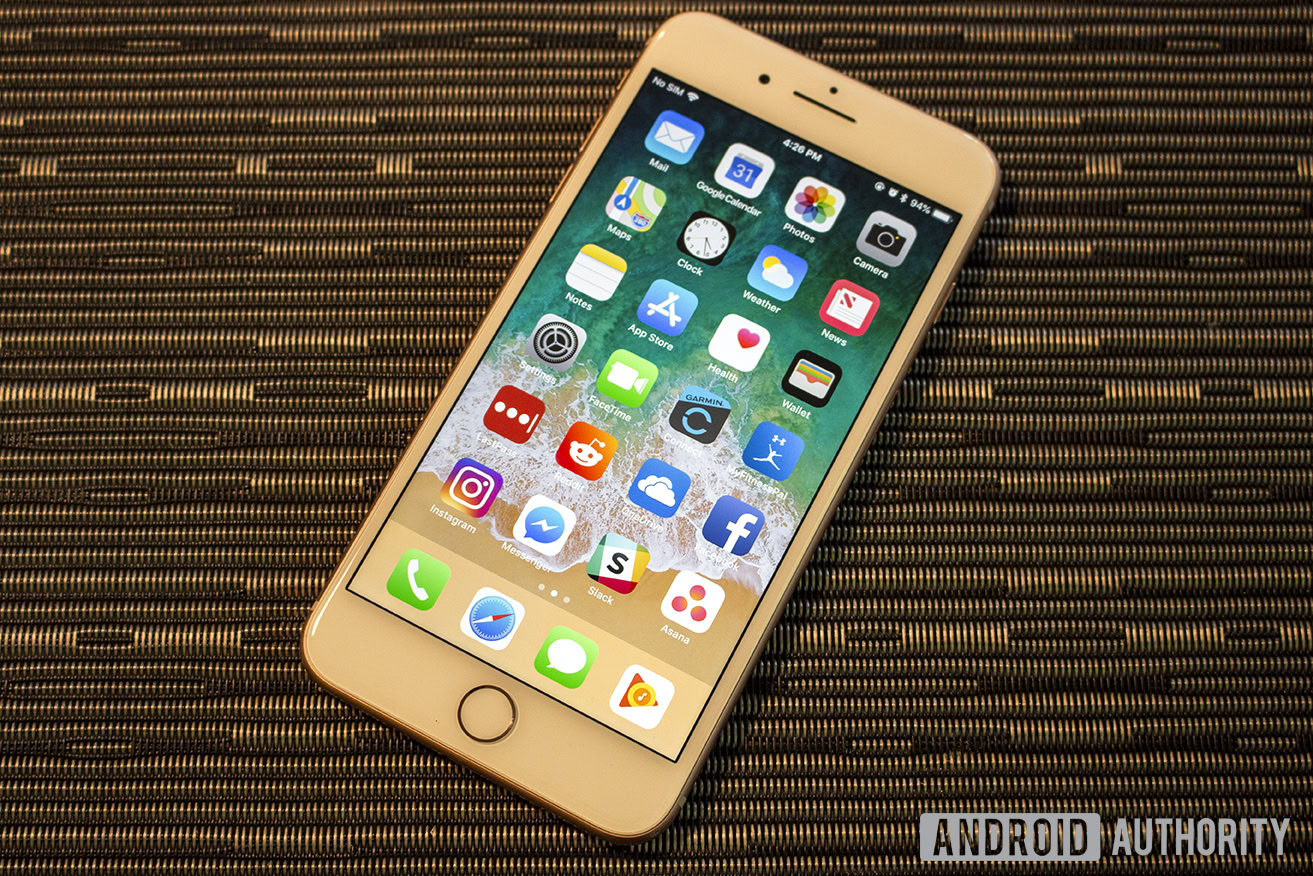
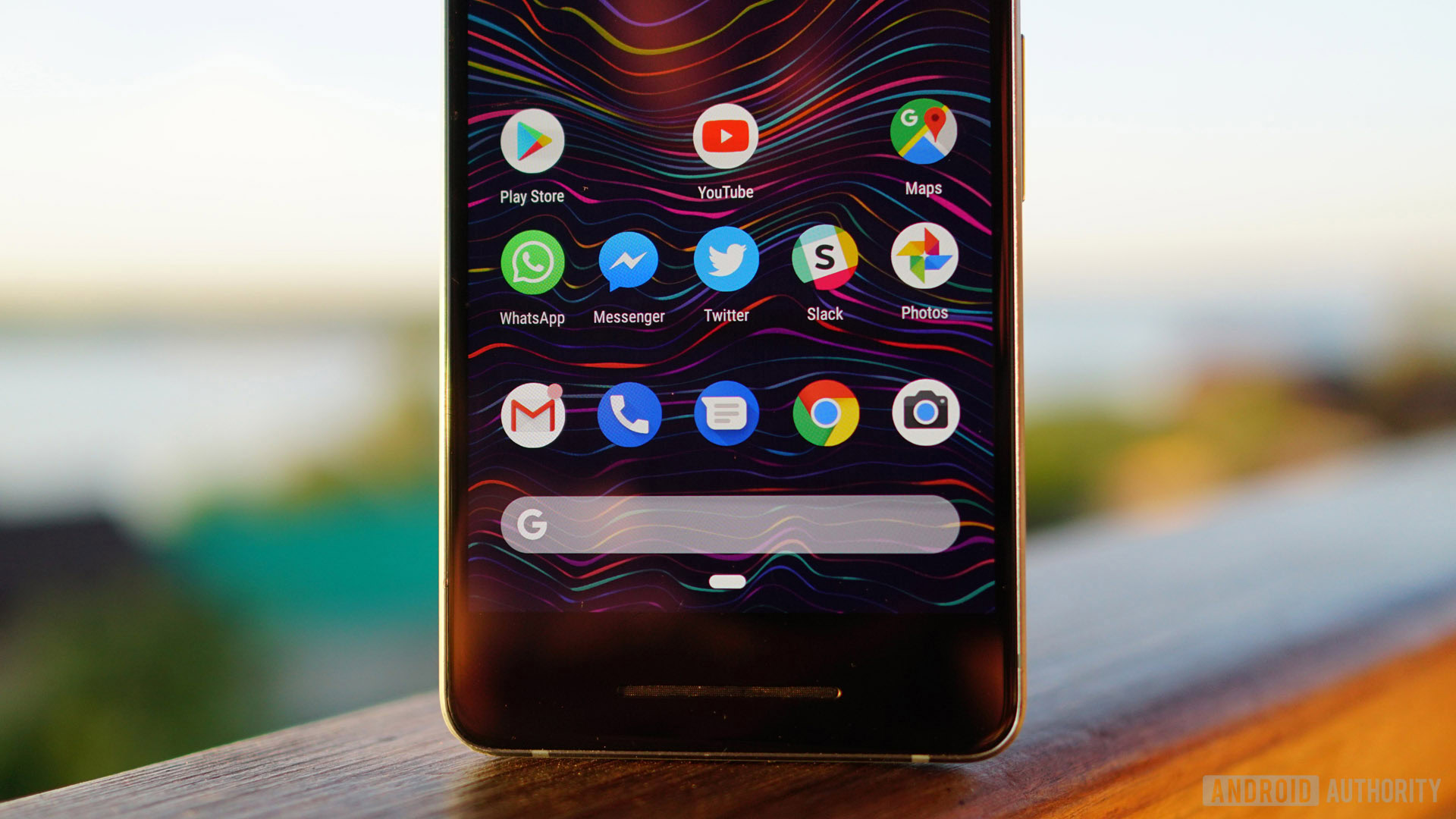
The new version also brings more general improvements to iOS. You can FaceTime with a group and create Memojis (essentially a customizable Animoji). Notifications are now bundled by app and iOS now shows screen-on time. This lets you see how much time you’re spending on your phone and it can break the info down on a per-app basis. Of course, these are both features that have long existed in Android.
It’s also worth bringing up software updates, and just how bad Samsung is at them. It took Samsung over six months to roll out Oreo to the Galaxy Note 8. It also has a bad habit of launching new phones with dated versions of Android. We all know it’s going to be a while until the Note 9 receives the Android Pie update. On the other hand, buying a new iPhone means you’ll always have access to the latest software updates right after Apple releases them.
Specifications
| Galaxy Note 9 | iPhone XS Max | |
|---|---|---|
Display | Galaxy Note 9 6.4-inch Super AMOLED 2,960 x 1,440 resolution (Quad HD+) 516ppi 18.5:9 screen ratio | iPhone XS Max 6.5-inch OLED 2,688 x 1,242 120Hz |
Processor | Galaxy Note 9 Global: 10nm, 64-bit, octa-core Samsung Exynos 9810 (2.8 GHz quad + 1.7 GHz quad) U.S.: 10nm, 64-bit, octa-core Qualcomm Snapdragon 845 | iPhone XS Max Apple A12 7nm construction |
RAM | Galaxy Note 9 6 or 8GB RAM LPDDR4 | iPhone XS Max TBD |
Storage | Galaxy Note 9 128 or 512GB microSD expansion up to 512GB | iPhone XS Max 64GB, 256GB, 512GB |
Camera | Galaxy Note 9 Rear: Dual camera with dual OIS Wide-angle: Super Speed Dual Pixel 12MP AF sensor with OIS, f/1.5 and f/2.4 apertures Telephoto: 12MP AF sensor, f/2.4 aperture, 2x zoom Front: 8MP AF sensor, f/1.7 aperture | iPhone XS Max Rear: Dual 12MP sensors Front: Single 7MP sensor |
Battery | Galaxy Note 9 4,000mAh battery Non-removable Fast wired charging compatible with QC 2.0 Fast wireless charging compatible with WPC and PMA | iPhone XS Max TBD |
Wireless fast charging | Galaxy Note 9 Yes | iPhone XS Max Yes |
Construction | Galaxy Note 9 Aluminum and glass | iPhone XS Max Stainless steel and glass |
Colors | Galaxy Note 9 Lavender purple, Ocean blue, Midnight Black, Metallic Copper | iPhone XS Max Space Grey, Silver, Gold |
Headphone Jack | Galaxy Note 9 Yes | iPhone XS Max No |
IP Certification | Galaxy Note 9 IP68 | iPhone XS Max IP68 |
Dimensions | Galaxy Note 9 161.9 x 76.4 x 8.8mm | iPhone XS Max 157.5 x 77.4 x 7.7mm |
Weight | Galaxy Note 9 201g | iPhone XS Max 208g |
Price | Galaxy Note 9 $999 | iPhone XS Max $1,099 |
Conclusion
Most people will say an Android versus Apple comparison boils down to personal preference, with most people knowing long ago which they prefer. While that is mostly true, it also depends on what features you value most. If a headphone jack, fingerprint sensor, expandable storage, and the S-Pen are important to you, the Note 9 is clearly the better choice. The iPhone lacks these features, but it hasn’t bothered me when using it as a daily driver as I consider none of them dealbreakers. I also prefer the more comfortable rounded design of the XS Max, the better camera performance, quicker updates and the fluidity of iOS 12 even if it isn’t as feature-rich as Android.
In this particular comparison, I preferred the iPhone XS Max overall. Not because it’s objectively better but because it more fully satisfies what I look for in a phone. Which one would you choose? Let us know in the comments!